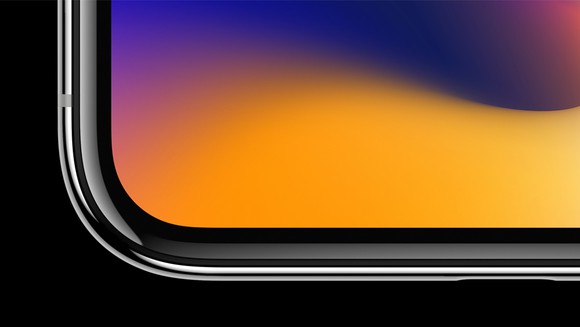We're now just about a month away from Apple's (AAPL 0.31%) iPhone X launch; the product will go on sale Nov. 3. Once the new flagship launches, supplies are still expected to be severely constrained due to component bottlenecks and low yield rates related to the 3D-sensing TrueDepth camera system. OLED panel supply, which is coming solely from Samsung, now appears to be sufficient.
A new Wall Street Journal report this morning details just how much Samsung could be earning off the iPhone X.

The iPhone X is the first iPhone to use an OLED panel. Image source: Apple.
But at what cost?
The South Korean conglomerate will reportedly bring in an estimated $110 per unit through mid-2019, according to Counterpoint Research. That figure would include both the OLED panel as well as other chips like NAND flash and DRAM memory that Samsung sells to Apple. Apple is expected to sell approximately 130 million iPhone X units during that time, generating $4 billion in component revenue for Samsung.
That's a pretty big difference compared to prior estimates. Last month, KGI Securities estimated that OLED unit costs alone were as high as $120 to $130, which is why it is so important for Apple to bring on a second OLED panel supplier as soon as possible, giving it more negotiating leverage to reduce costs.
The all-OLED lineup will have to wait
Apple was widely expected to continue its transition to OLED in 2018, potentially including those displays throughout the lineup next year if it could bring additional suppliers on board -- ones that could produce OLED panels that meet both Apple's quality and volume requirements. However, a report from last week from The Korea Herald suggested that the company may decide to keep LCD panels in the mix for a larger model with a display larger than six inches. Longtime LCD panel supplier Japan Display is expected to supply these panels.
It now appears that the full transition to OLED may not occur until 2019, which is good news for Samsung.
iPhone X margins need all the help they can get
Despite Apple CEO Tim Cook's warnings that he's never seen a third-party estimate on component costs that is "anywhere close to being accurate," third-party estimates are all investors have to work with. Directionally, the new estimate is a positive indicator for Apple's component costs since it's meaningfully lower than KGI's prior estimate.
It's already increasingly looking like the hardware margins on iPhone X will be lower than historical standards for the iPhone due to heightened component costs, even as the price point will start at $999.